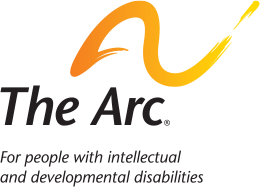The ADA at 35: A Legacy Worth Celebrating and Defending
Statement from Katy Neas, CEO of The Arc of the United States on the 35th Anniversary of the Americans with Disabilities Act:
The Americans with Disabilities Act reshaped this country for the better. For the first time, people with disabilities had legal protections against discrimination and exclusion. It created a framework for access and sent a clear message: disabled people belong in every part of community life.
I was a young Senate staffer in 1990 and had the opportunity to work on the ADA. I’ve spent the last 35 years working to uphold its promise. And I’ve never seen a more urgent moment than this one.
In the same month we mark this milestone, the federal government passed a budget that cuts nearly $1 trillion from Medicaid, a program that is the very foundation for inclusion. It helps people live at home, go to school, get basic health care, and contribute to their communities. At the same time, the Department of Education is being dismantled, leading to fewer staff enforcing special education laws. The Department of Energy is eliminating a longstanding rule that ensures new federally funded buildings are physically accessible. And slurs like the R-word are back in mainstream conversation, a huge step backward in basic decency and respect.
These are not isolated developments. Together, they show a national, coordinated pattern of erosion. Protections are being stripped. Services are being cut. And people with disabilities are being pushed back out.
This is exactly what the ADA was meant to prevent. When Congress passed the law in 1990, it found that “discrimination against individuals with disabilities persists in critical areas.” The ADA’s purpose was clear: to provide “a clear and comprehensive national mandate for the elimination of discrimination.” It also set a vision, one that is still relevant today: “equality of opportunity, full participation, independent living, and economic self-sufficiency.”
Yet 35 years later, those goals remain out of reach for far too many. And the very systems meant to protect them are being weakened. It’s no coincidence that disabled people are still fighting for access to education, employment, health care, and opportunity. This world wasn’t built with them in mind—so they’ve had to lead, build, and demand what others take for granted.
So we must ask: Who are we designing our society for? Who do we include, and who do we keep leaving behind? And what are we all missing because of it?
When people with disabilities are not at the table, we lose out on leadership, insight, and solutions. Inclusion is how we build stronger schools, smarter policy, more responsive workplaces, and communities that work for everyone.
The ADA was never the finish line; it was the floor. And right now, that foundation is being weakened by budget cuts, deregulation, stigma, and silence. It’s our job to bring it to life in ways that include everyone.
The Arc and our nearly 600 chapters nationwide are working every day to defend the ADA and build the future it promised. We are fighting for civil rights, community services, inclusive schools, access to health care, and respect. We were there when the ADA was written, advocating side-by-side with self-advocates and families to demand equal rights. And we’ve been there every step of the way since, holding the line, advancing progress, and insisting that the law’s promise becomes real in people’s lives.
Disability is a natural and valuable part of human diversity. It is also the one group any of us can join at any time. That means this fight is not just about disabled people, it is about all of us.
We cannot afford to turn away from these threats. A society that excludes people with disabilities will eventually exclude many more. Inclusion is one of the clearest ways we show who matters in our society. Let’s make sure our actions match our values.








